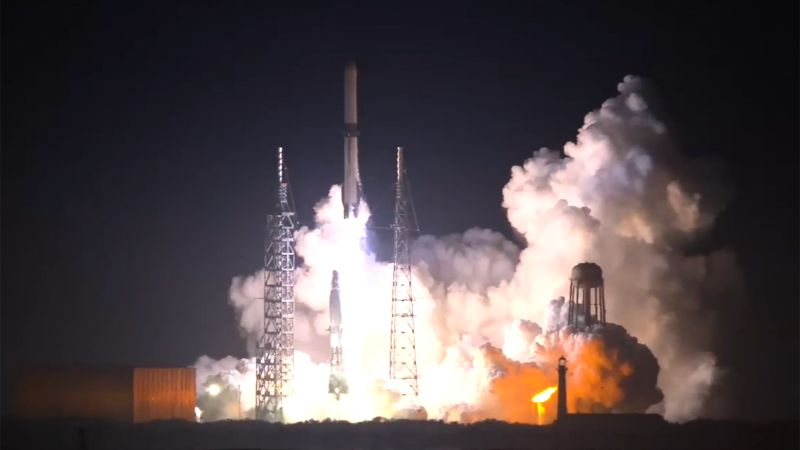The recent developments at Blue Origin signify a remarkable step forward in commercial space exploration. Founded by Amazon’s Jeff Bezos, the rocket company successfully launched its first powerful rocket, named New Glenn, into orbit on Thursday morning. This accomplishment places Blue Origin in a competitive stance within the expanding space industry, signifying the ambition to establish a reliable vehicle for satellite launches capable of performing multiple missions.
New Glenn’s inaugural flight took place just after 2 a.m. Eastern Time (ET) from Cape Canaveral Space Force Station, located in Florida. Onboard the rocket was the Blue Ring Pathfinder, a state-of-the-art demonstration technology that the company intends to refine and integrate into future missions. The flight marks a significant milestone for Blue Origin, as it transitions from technological development to practical launch capability. Although the primary objective of achieving orbit was met, the company faced a setback regarding its secondary goal— successfully returning the rocket’s first-stage booster to a floating platform named Jacklyn, which Jeff Bezos had named in honor of his mother.
The maneuver was critical for future cost reductions, emulating the reusable rocket technology developed by Elon Musk’s SpaceX, which has successfully executed similar operations with its Falcon rockets. Such a capability could potentially change the economics of spaceflight by allowing the reuse of significant rocket components, leading to reduced launch prices over time.
During the launch, New Glenn ignited its seven engines, propelling it off the launchpad into the dark sky. After a little more than three minutes, the rocket’s first-stage booster detached from the upper stage, marking a pivotal moment in the flight. Following the separation, the booster experienced difficulty during its self-guided landing attempt on Jacklyn. Live data from the rocket cut off moments before the ignition of its landing engines, resulting in uncertainty about the outcome. Subsequently, it was declared that the booster had been lost, underscoring the risks associated with developing reusable rocket technology.
Despite the failed recovery of the first-stage booster, other aspects of New Glenn’s mission were executed without issue. The overall mission is scheduled to conclude approximately six hours after launch, showcasing the rocket’s endurance and capability in space. Once the first stage completed its duties, the upper portion of New Glenn continued to operate, escalating its trajectory toward orbital velocities exceeding 17,000 miles per hour (27,359 kilometers per hour).
The exposed Blue Ring demonstrator remained attached through the duration of the mission, positioned as a precursor to future orbital operations. Excitingly, NASA has already planned to utilize New Glenn for launching two orbiters to Mars, signaling a promising partnership between the agency and Blue Origin.
Moreover, Blue Origin is on track to facilitate numerous commercial missions, including the deployment of Amazon’s satellite internet constellation and facilitating space-based communication through satellites for AST SpaceMobile. The Blue Ring technology serves a deeper purpose within the company’s vision, promising to enhance space infrastructure and deliver groundbreaking mobility solutions—mirroring services akin to an Uber in space.
As stated on Blue Origin’s website, the spacecraft addresses two significant challenges in modern space exploration. It aims to expand capabilities, facilitating the maneuverability required in increasingly congested orbital environments and allowing payloads to be deployed and hosted flexibly. The specifications also hint at potential for Blue Ring vehicles to transport substantial satellites weighing up to approximately 6,600 pounds (3,000 kilograms), projecting an exciting horizon for satellite technology advancements.
In addition, the collaboration with the Defense Innovation Unit of the US Department of Defense demonstrates the strategic relevance of Blue Origin’s technology in national defense and security aspects. Overall, the success of New Glenn’s launch serves as a crucial reminder of the evolving landscape of commercial space travel, firmly positioning Blue Origin among pioneers of the new era of space exploration.



